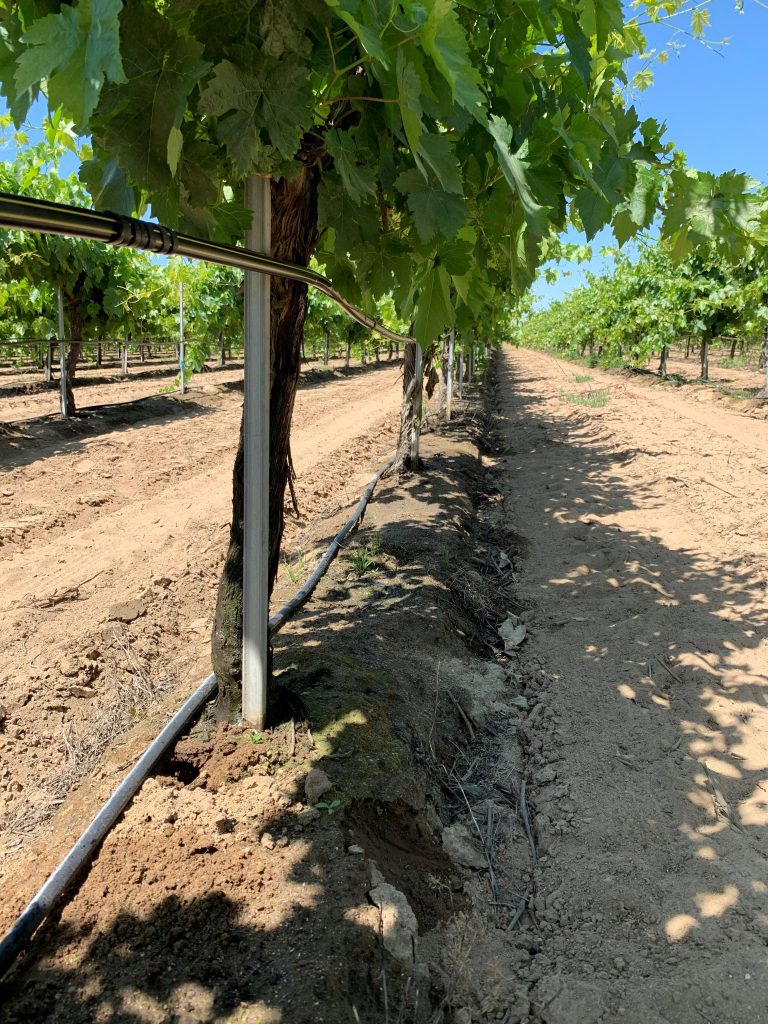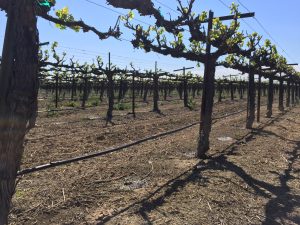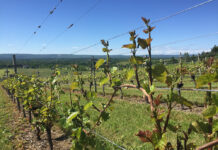
The squeeze on surface water deliveries and looming limitations on groundwater pumping make postharvest irrigation system maintenance critical to providing optimum irrigation during the growing season.
Cory Broad, territory sales manager for Jain Irrigation, said at a recent Sunmaid Growers education seminar that properly maintained irrigation systems will provide a more robust performance, making the most of potentially limited water supplies.
Waiting until irrigation commences in the spring to perform maintenance will add to the challenge of managing irrigation water, Broad warned.
“Looking at the water situation ahead, we need to see what can be done to make irrigation systems perform to their full potential,” Broad told grape growers.
“These systems are an expensive investment, and maintenance is necessary to protect their value,” said Steve Vasquez, technical viticulturalist for Sunmaid Growers. “They can last the life of a vineyard or orchard if maintained properly.”
Keeping the systems operating at peak performance will also save costs, Vasquez added.
Implementation of restrictions on groundwater pumping is expected in 2023 along with fallowing of more farm ground. While water amounts growers will be allowed to pump in 2023 are not clear, growers will need to make sure their systems are operating at full efficiency to make the best use of the water they have.
Broad’s presentation centered on system maintenance following harvest. Despite efforts to prevent damage to irrigation systems at harvest, there can be damage to emitter lines, microsprinkler heads, riser connections and ball valves and air vents at flushouts. Nicks or cuts on lines will lead to loss of pressure and affect distribution uniformity (DU).
“Operate the system after harvest to see where repairs are needed,” Broad said. “The reality is that there will be places that need to be repaired.”
Flushing lines and doing a DU test postharvest can signal need for corrective action, and Broad said it will be best to find out postharvest rather than March when irrigation companies will be much busier.
Performing a DU test after harvest is a great practice for many reasons, Broad said. Many irrigation systems will continue to operate for permanent crops, so no additional pumping hours are required. In addition, corrective actions can be identified with the irrigation system, implemented and checked out again all prior to the next season.
Identify Issues Prior to Irrigation Season
Broad said larger issues with systems can also be identified, and management plans can be created with your irrigation dealer well ahead of the fall/winter installation season.
Performing a global DU test on a system is always recommended, but Broad noted those tests are not always feasible given time and labor constraints.
He suggested a modified/rapid DU test can be done as a starting place for off-season maintenance. This can be done by taking 36 flow and PSI measurements across the vineyard or orchard, making sure to record flows and pressures in high-, medium- and low-pressure areas of the irrigation system.
Broad said collecting the pressure data is important for diagnosing where potential issues are in the irrigation system. Areas of low pressure and or low flow from your samples should be evaluated further to identify the root cause. Supplying this information to your irrigation dealer can allow for additional insight and corrective actions as well.
At the filter station, low PSI and high flow rate means field leaks. High PSI and low flow rate mean field plugging or closed valves. In the field, low PSI signals filter plugging, low flow, a pump issue or open valves. High PSI signals valves closed or field plugging.
Broad said that throughout the course of a season, filter stations experience changing water quality, various flow rates, wearing of media/filtration elements and chemical/precipitant reactions. He advised inspecting media levels in each tank and adding more if necessary. Quality of media also needs to be evaluated. It wears during use, losing its “edge.” Media should be changed if foreign inorganic material has built up deep into the media bed.

After media maintenance is complete, Broad advised running the irrigation system and checking that the controller and solenoids are all in working order. While there, make sure all air vents are operating and all leaks are fixed. Other checks include all Cam-Lok and hose connections for cracks or leaks. Record the flow rate and pressure during operation as this can help track changes in well performance and irrigation system operations.
Then there is flushing. Broad said that if irrigation system field components have not been routinely flushed throughout the season, that chore should be done as soon as possible.
The process begins by flushing the mainline and manifold piping segments. Zoning down sections is likely necessary to achieve proper flushing velocity, Broad said. Duration can be determined by rate and manifold length. For example, if you are flushing a pipeline at 1.5 feet per second, and the manifold is 660 feet long, the process would take 7.3 minutes to flush the entire length (divide manifold length by flush rate.) Flushing the emitter line tubing should be a common practice as well, Broad said. Correct velocity, higher pressure and duration are key to successful flushing. 60% of debris in the line is in the first 40% of the tubing. Minimum velocity is 1.5 feet per second.
If emission devices are still plugged after flushing, Broad said they will likely require replacement. In some instances, chemical treatment is necessary to protect the irrigation system from future contamination. Start with a water sample and ask your irrigation dealer for help in selecting the correct treatment for your system, field and issue. Common product types include calcium Hypochlorite, copper, sulfuric acid, chlorine and hydrogen peroxide. All recommendations should come from a certified professional and all safety and label precautions must be followed. Systems must be flushed following treatment to remove large-scale debris.
Broad stressed that planning for next season should include water budgeting no matter what crop. Track how much water you applied this past season, he advised, how much water your crop used, and how efficiently you applied that water.
Plan Overview:
- Water Budget
- Irrigation Start and Stop
- Flushing Protocol: How often is it necessary?
- Chemical Maintenance: Continuous? Shock?
- Materials: Couplers, Tees, Correct hose
- DU Testing






